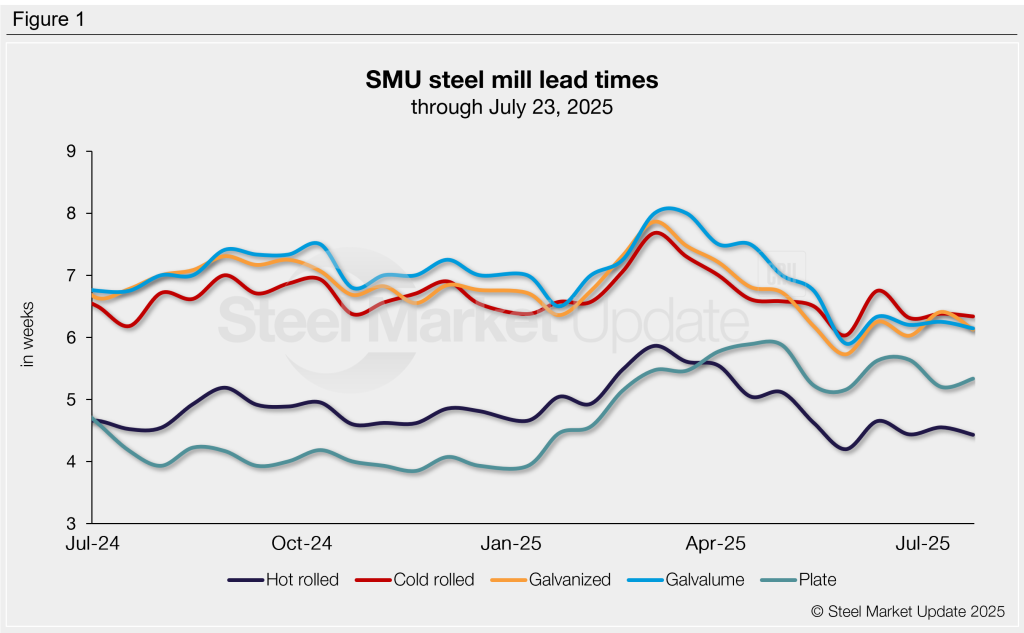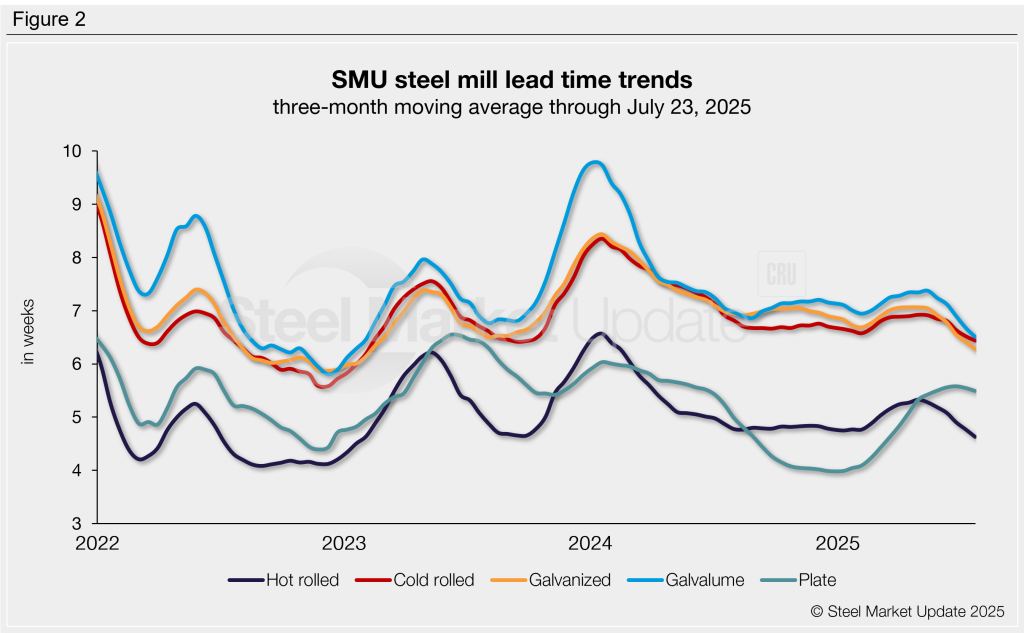Analysis

July 24, 2025
SMU Survey: Mill lead times remain short
Written by Brett Linton
Steel mill lead times on sheet products contracted across the board this week compared to early July, while plate production times moderately extended, according to steel buyers responding to this week’s market survey.
Sheet lead times have remained relatively stable over the past month, holding near some of the shortest levels recorded since late 2023. Recall that back in May, lead times for all sheet products fell to multi-year lows. The average lead time for hot-rolled coil is now just under four and a half weeks, while cold-rolled and coated products are in the low six-week range.
Plate production times have seen slightly more movement in recent weeks since their April peak, but have generally stayed within a five-to-six-week range. The latest average production time is just over five weeks. Plate lead times remain elevated compared to levels seen from mid-2024 through early 2025.
Table 1 summarizes current lead times and recent changes by product (click to expand)

Compared to our previous market check, only one of our lead time ranges changed this week: the lowest galvanized lead time considered in our range declined from five weeks to four.

Buyers predict stability
The majority of buyers (79%) anticipate lead times to hold steady over the next two months, up from 64% two weeks ago. Among the rest, 19% foresee extending lead times (down from 27%) and just 2% anticipate contractions (down from 9%).
Here are some of the comments we collected:
“I don’t see much happening to increase demand, so lead times may stay around their current times.”
“Stable, the market seems very well balanced at the current time.”
“Pretty simple supply>demand in the equation right now. We don’t anticipate that changing until a few macro things happen (trade deals, rate cuts, etc).”
“Could be contracting slightly, but already below four weeks.”
“They are extending now and will be flat in a few months.”
“They are rather short right now, up is the only way.”
“As demand increases lead times will extend.”
Trends
To highlight broader trends, lead times can be calculated on a three-month moving average (3MMA) basis (Figure 2). All sheet product 3MMAs declined for the sixth straight survey and plate declined for the second.
Across the past three months, the average lead times by product were: hot rolled at 4.6 weeks, cold rolled at 6.4 weeks, galvanized at 6.3 weeks, Galvalume at 6.5 weeks, and plate at 5.5 weeks.

Note: These lead times are based on the average from manufacturers and steel service centers participating in this week’s SMU market trends analysis survey. SMU measures lead times as the time it takes from when an order is placed with the mill to when it is processed and ready for shipping, not including delivery time to the buyer. Our lead times do not predict what any individual may get from any specific mill supplier. Consult your mill rep for actual lead times. To see an interactive history of our steel mill lead times data, visit our website. If you’d like to participate in our survey, contact us at info@steelmarketupdate.com.







